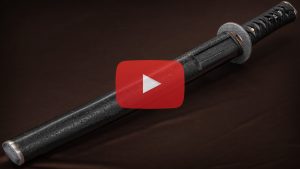In this latest episode of my wakizashi series, I take on the challenging task of crafting the saya (scabbard) for my blade.
Just like all the other pieces, this was a long and tedious process that required careful attention to detail.
For the saya, I chose linden wood, known for its ease of carving and elasticity. The koiguchi (scabbard mouth) and the mouthpiece for the kozuka (small knife) are both made from horn. To secure the sageo cord to the scabbard, I shaped a Kurigata from olive wood burl. Additionally, the Kojiri (saya tip) features mild steel with copper wire inlay decoration, matching the other copper elements of the wakizashi.
Throughout the shaping process, I made sure to avoid using sandpaper or abrasives, ensuring the inside remains free from hard particles, so the blade can slide in and out of the saya scratch-free.
For the finishing touch, I experimented with a traditional urushi-like finish using ground and finely sifted tea leaves. While I didn’t use real urushi due to the extended drying times, I opted for modern products like resins and nitro solvent-based paints. The result may have a slightly rougher texture compared to the original, but I’m thrilled with the outcome. Not only does it look similar, but it likely provides a tougher finish too!
Overall, I’m extremely happy with how the saya turned out. The blade fits snugly, and the saya securely grips the habaki as it should. As a non-woodworker, creating this piece entirely with hand tools was a rewarding challenge that I successfully overcame.

